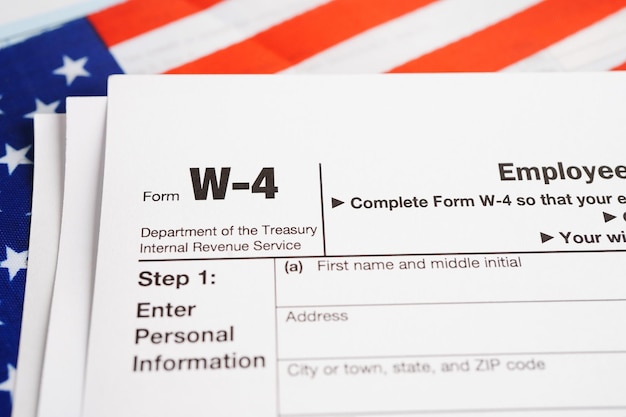Maximize Your Savings: Student Loan Interest Deduction in 2025

Understanding the student loan interest deduction is crucial for borrowers aiming to lower their tax liability; this deduction allows you to subtract the interest paid on qualifying student loans from your taxable income, potentially offering significant savings when you file your taxes in 2025.
Navigating the complexities of student loan repayment can be daunting, but understanding available tax benefits can ease the financial burden. One significant benefit is the student loan interest deduction, which allows eligible taxpayers to deduct interest paid on qualified student loans. This guide provides a comprehensive overview of how to leverage this deduction in 2025 to maximize your tax savings.
Understanding the Basics of the Student Loan Interest Deduction
The student loan interest deduction is a tax benefit that allows individuals to deduct the interest they paid on qualified student loans. By understanding the basic principles, you can determine if you are eligible and how to claim it when filing your taxes.
What is Qualified Student Loan Interest?
Qualified student loan interest refers to interest payments made on loans used to pay for higher education expenses. These expenses include tuition, fees, room, board, books, and supplies.
Who Qualifies for the Deduction?
To qualify for the deduction, several criteria must be met. The loan must be taken out for yourself, your spouse, or a dependent. You must be legally obligated to pay the interest, and your modified adjusted gross income (MAGI) must be below a certain threshold.
- Loan Purpose: The loan must have been used to pay for qualified education expenses.
- Legal Obligation: You must be legally required to pay the interest.
- MAGI Limits: Your modified adjusted gross income (MAGI) must be below the IRS-set limit for the tax year.
In summary, the student loan interest deduction can provide significant tax relief. Understanding the basics, including what qualifies as student loan interest and the eligibility requirements, is the first step to claiming this valuable deduction.

Eligibility Requirements for the Student Loan Interest Deduction
Meeting the eligibility requirements is crucial to claim the student loan interest deduction. These requirements cover various aspects, including the type of loan, the borrower’s status, and income limitations.
Type of Loan
Only certain types of loans qualify for the deduction. These typically include federal student loans, as well as private student loans used to pay for qualified education expenses.
Borrower Status
The borrower must be the person legally obligated to repay the loan. Additionally, the borrower cannot be claimed as a dependent on someone else’s return.
- Legal Obligation: You must have a legal requirement to repay the loan.
- Not a Dependent: You cannot be claimed as a dependent on another person’s tax return.
- Filing Status: Your filing status can impact your eligibility.
Understanding these eligibility requirements is essential to determine if you can claim the student loan interest deduction in 2025. Make sure to review each criterion carefully when preparing your taxes.
Understanding Modified Adjusted Gross Income (MAGI) Limits
One of the most important factors in determining eligibility for the student loan interest deduction is your Modified Adjusted Gross Income (MAGI). The IRS sets specific MAGI limits each year, and exceeding these limits can disqualify you from claiming the deduction.
What is MAGI?
MAGI is your adjusted gross income (AGI) with certain deductions added back, such as deductions for student loan interest and IRA contributions. It’s a key figure in determining eligibility for various tax benefits.
MAGI Thresholds for 2025
While the exact MAGI thresholds for 2025 may not be available yet, it’s helpful to look at previous years’ limits to get an idea. The IRS typically updates these figures annually.
- Review Past Limits: Check previous years’ MAGI limits to estimate potential thresholds for 2025.
- Track Income: Monitor your income throughout the year to ensure you stay within the limits.
- Plan Accordingly: If your income is close to the limit, consider strategies to reduce your MAGI.
Understanding MAGI limits is crucial for claiming the student loan interest deduction. By staying informed and planning accordingly, you can maximize your chances of qualifying for this tax benefit.

How to Calculate the Student Loan Interest Deduction
Calculating the student loan interest deduction involves several steps, including gathering the necessary documents and understanding the deduction limits. This section provides a step-by-step guide to help you accurately calculate your deduction.
Gathering Necessary Documents
The primary document you’ll need is Form 1098-E, Student Loan Interest Statement. This form is provided by your student loan servicer and shows the amount of interest you paid during the year.
Step-by-Step Calculation
Once you have your Form 1098-E, you can begin calculating the deduction. The maximum deduction allowed is $2,500, but the actual amount you can deduct depends on the interest you paid and your MAGI.
- Identify Interest Paid: Find the total interest paid on Form 1098-E.
- Determine MAGI: Calculate your Modified Adjusted Gross Income.
- Apply Deduction Limits: If your MAGI is below the threshold, you can deduct the lesser of the interest paid or $2,500.
Accurately calculating the student loan interest deduction can help you maximize your tax savings. By following these steps, you can ensure you claim the appropriate amount on your tax return.
Filing Your Taxes and Claiming the Deduction
Claiming the student loan interest deduction involves completing the appropriate tax forms and providing the necessary information. This section guides you through the process of filing your taxes and claiming this deduction.
Which Tax Form to Use
The student loan interest deduction is claimed on Schedule 1 (Form 1040), Additional Income and Adjustments to Income. This form is used to report various adjustments to your income, including the student loan interest deduction.
Step-by-Step Filing Instructions
To claim the deduction, you’ll need to enter the amount of student loan interest you paid on Schedule 1. Make sure to follow the instructions provided by the IRS and keep accurate records of your payments.
- Complete Schedule 1: Fill out Schedule 1 (Form 1040) with the required information.
- Attach Form to Return: Include Schedule 1 with your Form 1040 when filing your taxes.
- Keep Records: Maintain records of your student loan interest payments for future reference.
Filing your taxes and claiming the student loan interest deduction can result in substantial tax savings. By following these instructions and keeping accurate records, you can ensure you receive the full benefit of this deduction.
Maximizing Your Tax Savings with the Student Loan Interest Deduction
To make the most of the student loan interest deduction, consider these strategies to maximize your tax savings. Planning ahead and being proactive can help you take full advantage of this tax benefit.
Optimize Loan Repayment
Consider making extra payments on your student loans to reduce the total interest you pay over time. This can not only save you money on interest but also increase your eligibility for the deduction.
Stay Informed About Tax Law Changes
Tax laws can change, so it’s important to stay informed about any updates that may affect the student loan interest deduction. Regularly check the IRS website and consult with a tax professional to stay up-to-date.
- Pay Extra: Make additional payments to reduce overall interest.
- Stay Updated: Keep informed about changes in tax laws.
- Seek Advice: Consult with a tax professional for personalized guidance.
By optimizing your loan repayment and staying informed about tax law changes, you can maximize your tax savings with the student loan interest deduction. Proactive planning and careful attention to detail are key to reaping the full benefits of this deduction.
| Key Point | Brief Description |
|---|---|
| 💰 Deduction Basics | Tax benefit for interest paid on qualified student loans. |
| ✅ Eligibility | Loan used for education, legal obligation to pay, and MAGI limits. |
| 📝 MAGI Limits | Income thresholds set by the IRS determine eligibility. |
| 📊 Calculation | Use Form 1098-E, determine MAGI, and apply deduction limits. |
Frequently Asked Questions
▼
The maximum student loan interest deduction is $2,500 per year. This is the maximum amount of interest you can deduct from your taxable income, regardless of how much interest you actually paid.
▼
No, you can only claim the deduction if you are legally obligated to pay the interest on the student loan. If someone else, such as a parent or relative, paid the interest, you cannot claim the deduction.
▼
If you refinanced your student loans, the interest you pay on the new loan may still be deductible, provided that the loan was used to pay for qualified education expenses and you meet all other eligibility requirements.
▼
Your filing status can affect your eligibility for the deduction, particularly through its impact on the MAGI limits. Certain filing statuses may have different income thresholds for claiming the deduction, so it’s important to consider this when preparing your taxes.
▼
Form 1098-E, Student Loan Interest Statement, is provided by your student loan servicer. Typically, you will receive it electronically or by mail in late January. You can also usually access it through your servicer’s online portal.
Conclusion
Understanding and utilizing the student loan interest deduction can significantly reduce your tax burden. By familiarizing yourself with the eligibility requirements, MAGI limits, and calculation methods, you can effectively claim this deduction and optimize your tax savings in 2025.





